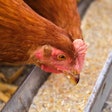Here is a simple challenge for everyone who operates or manages a feed mill where feeds are manufactured for farm livestock. The following question about relative economics was recently raised in a discussion with feed companies.
What would you say if you were asked to list the main inputs of the manufacturing process in order of their cost per ton of feed produced? The question, therefore, assumes all costs other than for ingredients and marketing.
In the discussion, the cost categories most often mentioned were those of labor, equipment depreciation and energy. Their listing depended to some extent on the amount of processing involved. For a meals-only operation, the energy bill, for example, would be substantially less per ton than where pelleting or extrusion was undertaken.
Labor inputs obviously depend on the degree of automation, as well as on the number of product types and whether these are sent from the mill in bulk or in bags.
Few surprises appeared in either category during the discussion, apart from an indication that energy costs had not risen as sharply as feared and a suggestion that increased safety protection measures and extra maintenance/cleaning requirements had added to the total labor cost. An issue at mill level was how often to clean and maintain without disrupting the production line unnecessarily.
But, the comments at the meeting became more surprising when they went beyond the manufacturing process and considered also the costs involved in bringing raw materials to the mill, storing them, and then transporting the final product to the customer.
Transport was revealed as a bigger aspect of expenses than many companies had calculated and also a cost that was rising rapidly.
Say that manufacturing itself had a cost index of 100, a company representative remarked. Storage on its own – at the mill and externally – could work out at 10 on this scale. Raw material delivery may have escalated in cost terms to an index rating of 60.
Hauling the feed to the farm has become even more costly, however. The cost per ton on the same index scale was suggested to be between 150-200. In other words, industrially produced feeds today may cost up to twice as much per ton to transport as to manufacture.
Here is a simple challenge for everyone who operates or manages a feed mill where feeds are manufactured for farm livestock. The following question about relative economics was recently raised in a discussion with feed companies.
What would you say if you were asked to list the main inputs of the manufacturing process in order of their cost per ton of feed produced? The question, therefore, assumes all costs other than for ingredients and marketing.
In the discussion, the cost categories most often mentioned were those of labor, equipment depreciation and energy. Their listing depended to some extent on the amount of processing involved. For a meals-only operation, the energy bill, for example, would be substantially less per ton than where pelleting or extrusion was undertaken.
Labor inputs obviously depend on the degree of automation, as well as on the number of product types and whether these are sent from the mill in bulk or in bags.
Few surprises appeared in either category during the discussion, apart from an indication that energy costs had not risen as sharply as feared and a suggestion that increased safety protection measures and extra maintenance/cleaning requirements had added to the total labor cost. An issue at mill level was how often to clean and maintain without disrupting the production line unnecessarily.
But, the comments at the meeting became more surprising when they went beyond the manufacturing process and considered also the costs involved in bringing raw materials to the mill, storing them, and then transporting the final product to the customer.
Transport was revealed as a bigger aspect of expenses than many companies had calculated and also a cost that was rising rapidly.
Say that manufacturing itself had a cost index of 100, a company representative remarked. Storage on its own – at the mill and externally – could work out at 10 on this scale. Raw material delivery may have escalated in cost terms to an index rating of 60.
Hauling the feed to the farm has become even more costly, however. The cost per ton on the same index scale was suggested to be between 150-200. In other words, industrially produced feeds today may cost up to twice as much per ton to transport as to manufacture.

















